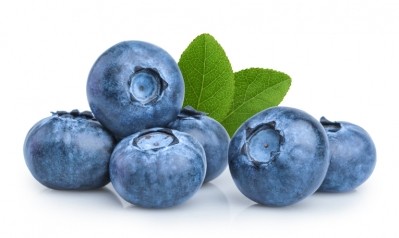Apple polyphenols cut UV effects in skin, study shows

The new ingredient, which BGG acquired from a formulation partner, is marketed as ApplePhenon. With the latest research published in the journal Nutrients the company claims that the ingredient is now backed by 17 clinical studies.
Sourced from wild apples
The raw material for the ApplePhenon extract is sourced from unripe, wild apples from the species Malus pumila harvested in a wildcrafting fashion in the Xinjiang region of China. The company notes that wild apples, the source from which the more than 7,000 domesticated varieties have been developed over thousands of years, still grow in their native range in Central Asia in Xinjiang and on the other side of the Tian Shan Mountains barrier in Kyrgyzstan.
BGG says the ingredient contains a complex suite of polyphenols, including oligomeric and polymeric fractions. These are claimed to work in a synergistic fashion, with the non-absorbable polymeric procyanidins fraction said to boost the bioavailability of the absorbable fraction by modulating the gut microbiota.
According to Lixin Ding, PhD, BGG’s chief operating officer, the company assures the proper polyphenol content of the raw material by controlling for size. Research has shown that the apples must be harvested at between 2 cm to 4 cm in diameter to have the correct chemical profile.
The latest research was structured as randomized, placebo-controlled trial using 65 younger Japanese women as subjects. There were three arms to the study, the placebo group, a low dose (300gm/day) and a high dose (600mg/day) group.
The researchers excluded any women who had pre existing skin conditions and any who were talking antioxidant supplements like CoQ10, vitamin C or other polyphenol sources such as green tea extracts. The study stretched over 12 weeks and was conducted in the spring.
Participants had a portions of the inner side of their upper arms exposed to UV radiation in a controlled manner. The research also assessed parameters of skin health for their facial skin, including water content and transepidermal water loss.
Positive measures on UV effects
The research team found that the ApplePHenon supplementation resulted in less skin reddening after UV radiation. They also saw less melanin formation and less skin darkening. In addition, they said the product seemed to restrict the formation of superoxide radicals, demonstrating its antioxidant activity. There was no change in the measures of facial skin, however.
“In the current study, ApplePhenon oral administration was effective in inhibiting pigmentation by UV irradiation,” said Yanmei Li, PhD, BGG’s global chief scientific officer. “This is the second clinical study showing that ApplePhenon may be effective as a complimentary support for healthy skin.”
The global skin lightening market is expected to grow at more than 7% CAGR through 2025, though that projection was made before the COVID-19 crisis hit. One report publisher claims that beauty from within products have not fallen off as much as expected with the crisis.
Source: Nutrients
2020, 12(4), 1071; https://doi.org/10.3390/nu12041071
Administration of Apple Polyphenol Supplements for Skin Conditions in Healthy Women: A Randomized, Double-Blind, Placebo-Controlled Clinical Trial
Authors: Shoji T, et al.
















